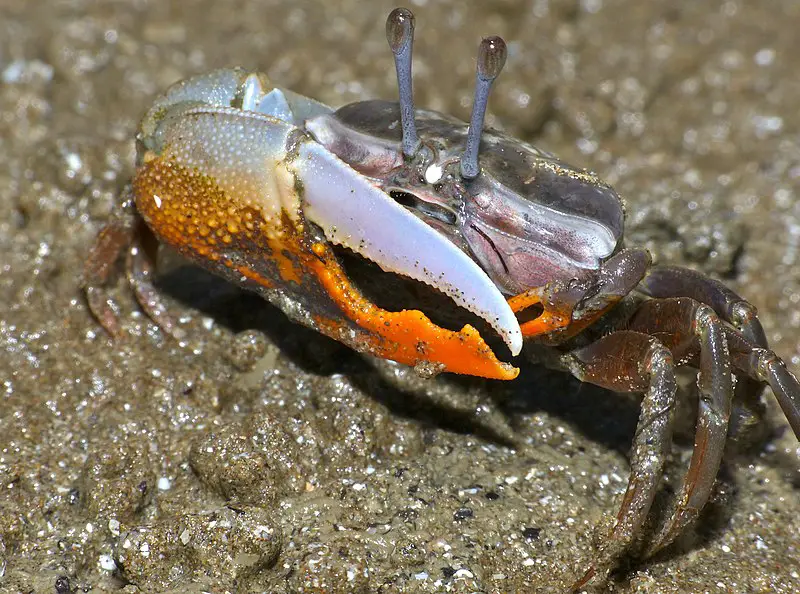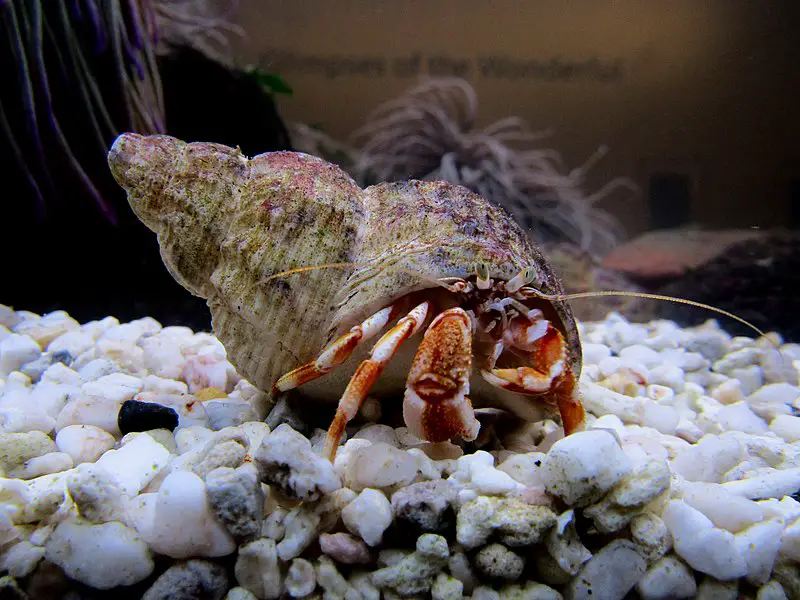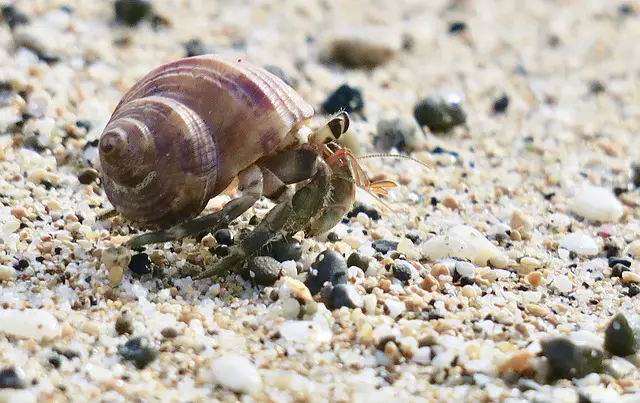Fiddler crabs generally make bubbles when they are breathing normally. If you have even seen or even owned a fiddler crab, you may have found yourself a little worried by seeing them begin to foam at the mouth. Although they may seem as though they are in distress, it is actually perfectly normal for fiddler crabs to make bubbles.
As you know, fiddler crabs are amphibious. That means that they live both on dry land and in water. That is why, occasionally, you may see them on land, foaming from their gills. The foaming comes from the fact that the crab is now going from breathing water to breathing air.
Just like fish, crabs have gills that they use to breathe. In order for the gills to function, they need to be wet. It is therefore believed that the crabs make bubbles in order to comfortably carry the oxygen through the gills and into their blood. They usually begin to create bubbles when they are running low on oxygen in particular.
That being said, crabs do also occasionally make bubbles when they are in distress. If your crab is perfectly healthy, then the bubbles are more likely there to show that the fiddler crab is adapting to being out of water. However, it is a good idea to keep an eye on your crab, just in case.
Is my fiddler crab molting or dead?
If a fiddler crab is molting, it normally starts to change color and shade – and can show some odd behavior. However, molting is natural – but it can be quite a distressing process, both for them and for you! Their exoskeletons are great for protecting them from the elements and from predators; however, they cannot grow with them, leading them to molt their exoskeletons and create new ones for their adopted size. They can also molt in order to get rid of certain toxins and to regrow limbs.
However, the process does take some time and makes them vulnerable, and can cause them stress. If you notice a few changes in your fiddler crab, then it could be that they are beginning to molt, which is why it is important for you to be able to recognize the signs.
Fiddler crabs indicate they are about to molt by slightly changing colors a few days beforehand. Usually, around two or three days before molting, they will become browner (either darker or lighter) or even take on a purple hue. They may also start to hide and stop eating, as, in the wild, they need to better protect themselves during this period.
A few hours before the molting begins, your crab may even stop moving completely. You should leave them be during this time, potentially removing other tank mates if they become too stressful for the molting crab to handle. You can expect this kind of growth every eight weeks – approximately.
My fiddler crab died suddenly – why is this the case?
Sudden fiddler crab deaths can occur if they don’t molt successfully. In some cases, if the fiddler crab does not have an ideal environment in which to thrive, then the molting process cannot take place. As you know, the molting process is essential for getting rid of certain toxins, as well as for the crab to be able to grow.
As previously mentioned, fiddler crabs usually molt every eight weeks approximately – however, it can be far more frequent than that when they are younger. That is why ensuring that they have the perfect environment in order to molt is essential. The molting process can be prevented by a lack of minerals, calcium and even (very small) amounts of iodine present in their water. The fiddler crab will also have to reside in brackish waters to survive molting.
Fiddler crabs can also die suddenly if they are starving or injured. Keeping fiddler crabs can be relatively easy when you know how to care for them perfectly – however, it can take some time to learn how to watch over them, and you do need to be attentive to all of their needs.
Keeping fiddler crabs alive
In order to keep your fiddler crabs alive, there are a few things to keep in mind. Of course, you will need to ensure that the tank is perfect for the fiddler crabs by making certain that they have an adequate amount of water and physical land. Providing them with a ramp out of the water is also a good idea. You will need to further ensure that the salt levels in the water are perfect so that the fiddler crab is in effectively brackish waters.
Then, you will have to monitor the minerals and calcium levels in the tank to ensure that the molting process can take place as expected. You may have heard that fiddler crabs often eat their old shells for the calcium and to improve the hardness of their new shells, and while that is true, they still need a healthy amount of minerals and calcium in order for the molting to begin.
Finally, in order to keep your fiddler crabs alive, ensure that they are getting the right nourishment. They need feeding every day, and feeding them things such as shrimp pellets, tadpole pellets, flake fish food, worms, or dried cat food (preferably in very small pieces), will help to keep them healthy and active.
Where do fiddler crabs go in the winter?
Fiddler crabs are known to hibernate in winter. They tend to make burrows in the sand or in the mud to mate, hide, or sleep. They also commonly use them to hibernate in the winter. Furthermore, they usually remain active during the day, so it is not precisely hibernating by definition – however, you can often find them in their burrows at night, sometimes having closed them up with sand or mud.
These burrows help to keep them warm and to protect crabs from predators. They burrow in sand and mud whether they are in the wild or in captivity. Unlike certain crabs, however, fiddlers do not necessarily need heaters in their tanks and can therefore manage in the cold by burrowing.
However, if you are concerned about your fiddler crabs getting too cold, then you can always use an aquarium heater, ensuring that the temperature inside the tank remains between 75 Fahrenheit and 85 Fahrenheit. This is the perfect temperature for the fiddler crab, ensuring that it can go about the rest of its daily routines as normal!



